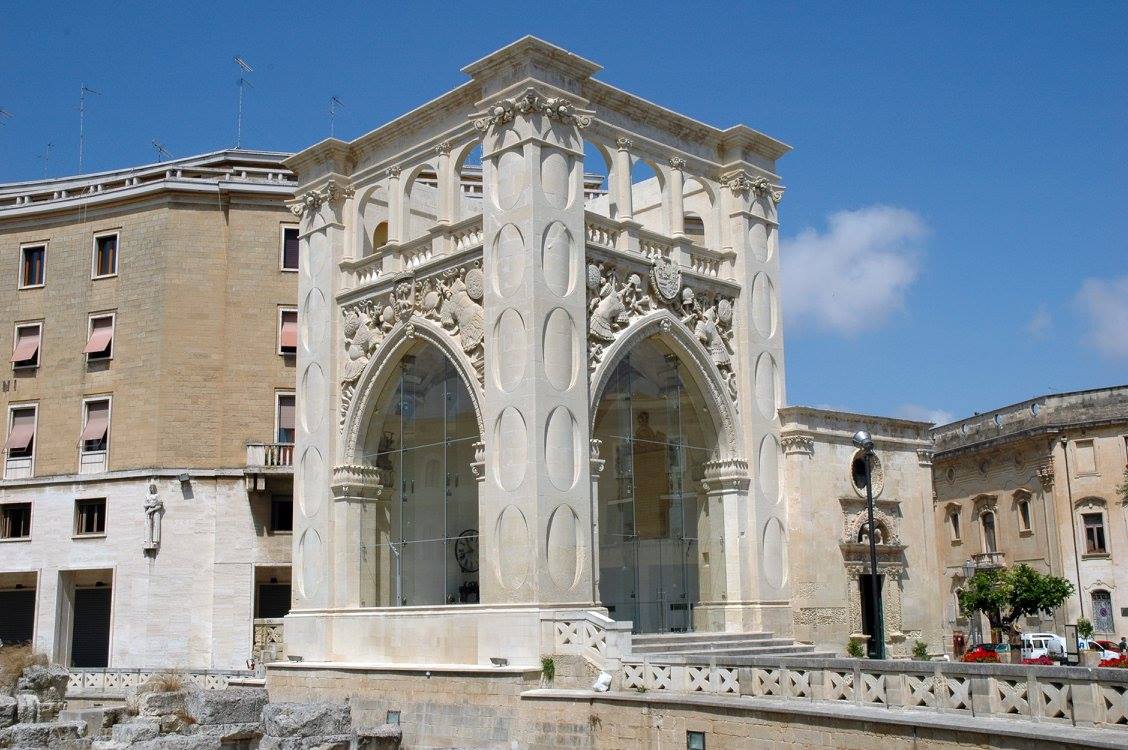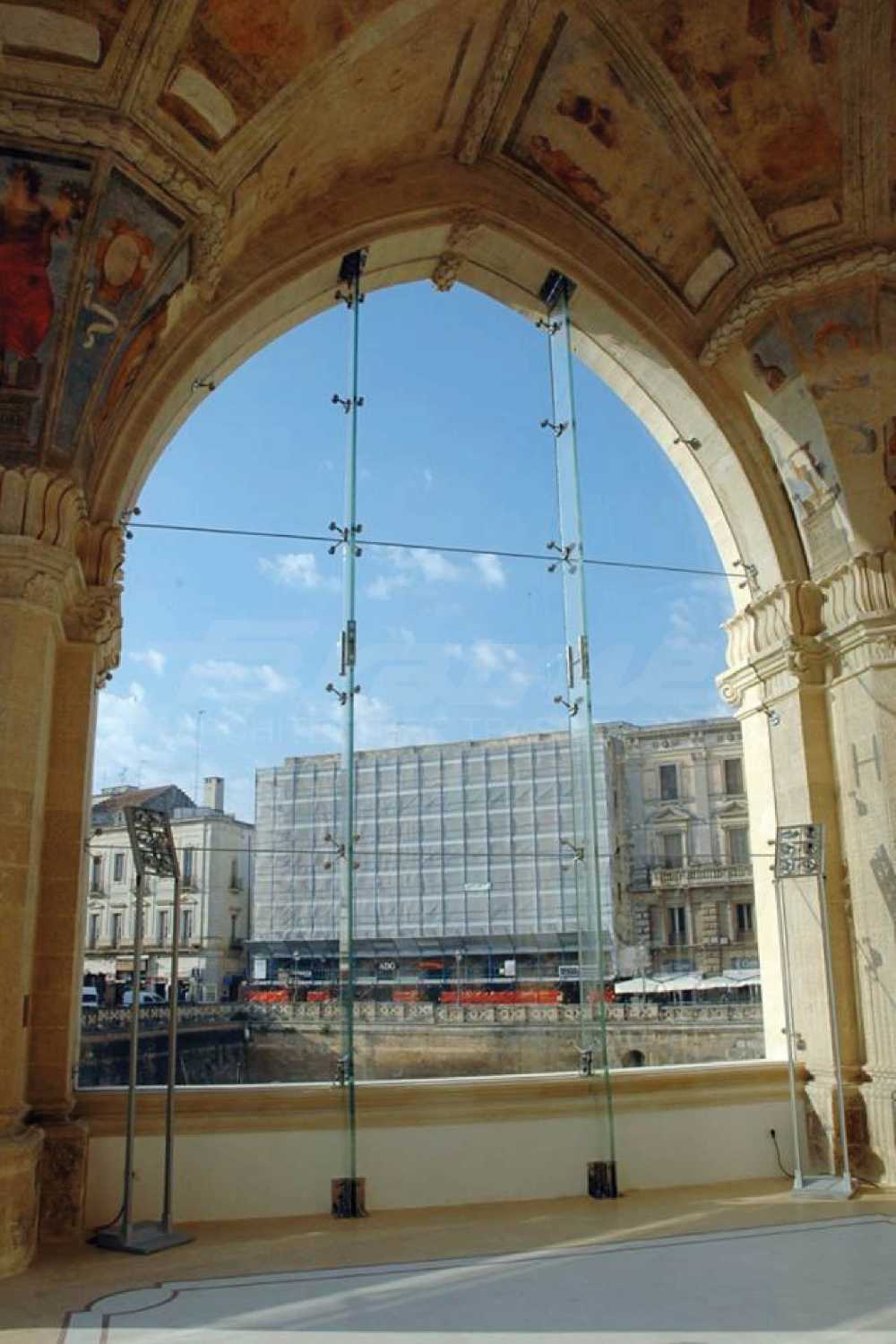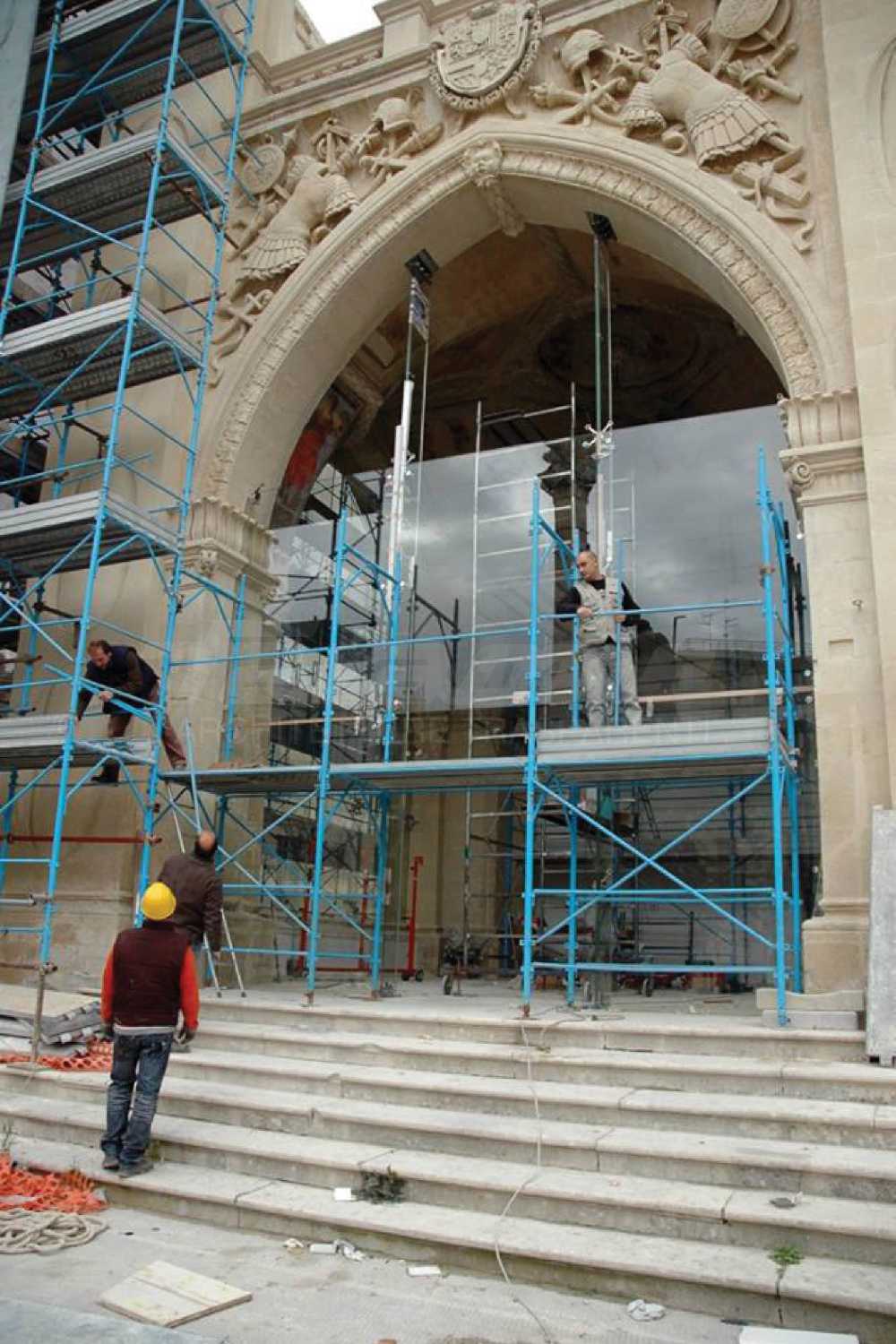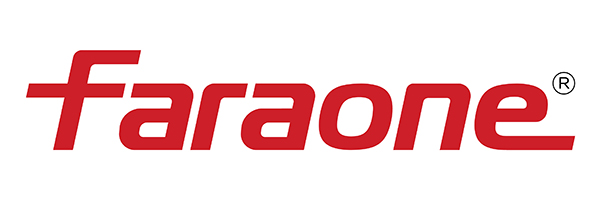The company Faraone, in collaboration with the expert glassmaker Calasso, contributes to the restoration of the famous historic building "Il Sedile" built in Lecce in 1592, with an operation of lightening that involves the replacement of framed windows


Restoration of historic building in Lecce. Glass panels lighten the elevations
The structure of the famous historical building "Il Sedile" built in Lecce in 1592 on the instructions of the then Venetian mayor Pietro Mocenigo, is the subject of an operation of lightening thanks to the replacement of framed windows
- #L'Europe
- #Italie
- #Culture and Services
- #Verre
- #Métal
- #Architectures
- #Construction

Before the restoration, the Sedile had iron stained-glass windows installed at the start of the last century: these stained-glass windows by now had a deteriorated structure with largely oxidized outlines. In addition, in the past, an effort was made to give stability to this large surface made of iron and glass, which was heavily stressed by the thrust of the wind, by inserting horizontal bracing beams embedded in the pillars

The old stained-glass windows were an objectively prevailing element of the overall view of the monument and marked a clear diaphragm between exterior and interior. Therefore, the replacement of the old windows corroded by atmospheric agents, in a strong state of degradation and no longer suitable for the new standards of maintenance of the microclimate in the interior spaces was significant

The old framed glass panels are therefore replaced by a Faraon Glassfin solution. The glass walls are supported by glass pillars connected together by stainless steel accessories

The new glazing consists of double laminated and anti-reflective safety glass; the supporting structure is made up of transversal partitions, also made of structural glass, on which the individual slabs are fixed by means of a precise system of steel ball joints and crosspieces

The continuous glazing makes it possible to highlight the very architecture of the monument, eliminating the fragmentations caused by the excessive frames of a traditional framed glass wall and significantly lightening the visual impact of the façades. This project is a good example of how the timely fixing applied to glass panels can preserve the aesthetics and functionality of historic buildings









